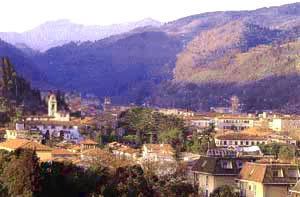Demonym(s) Pesciatini Local time Monday 10:21 PM | Elevation 62 m (203 ft) | |
 | ||
Frazioni Medicina, Fibbialla, Aramo, San Quirico, Castelvecchio, Stiappa, Pontito, Sorana, Vellano, Pietrabuona, Collodi, Veneri, Chiodo Weather 10°C, Wind NE at 14 km/h, 39% Humidity Points of interest Parco di Pinocchio, Villa Garzoni, Giardino Garzoni, Museo del palazzo del podestà e, ex‑Mercato dei Fiori | ||
Pescia piccola grande italia
Pescia ([ˈpeʃʃa]) is an Italian city in the province of Pistoia, Tuscany, central Italy.
Contents
- Pescia piccola grande italia
- Map of Pescia Province of Pistoia Italy
- Prof pescia feat trapattoni
- History
- Main sights
- Economy
- Education
- Twin cities
- References
Map of Pescia, Province of Pistoia, Italy
It is located in a central zone between the cities Lucca and Florence, on the banks of the homonymous river.
Prof pescia feat trapattoni
History
Archaeological excavations have suggested that the Lombards built the first settlement here on the river banks. The name of the city comes in fact from a Lombard word, meaning "river".
Lucca occupied and destroyed Pescia during the 13th century, but the town was quickly rebuilt. During the entire Middle Ages Florence and Lucca contended for the city, as the latter was located on the border between the two republics. In 1339, after almost ten years of war, Florence occupied it.
The economy of the town was founded on mulberry cultivation and silkworm breeding. Heavily struck by the Black Death, Pescia overcame the demographic and economical depression which had ensued only at the end of that century (15th century).
At the end of the 17th century the Grand-duke of Tuscany declared Pescia "City of the Grand Duchy of Tuscany". In the 19th century the silk production was so important that Pescia was called "the little Manchester of Tuscany". The economy of the town dropped after a commercial conflict between France and Italy (1888). The passage of Napoleon highly damaged the economy of the city, because he substituted silk with sugar beet.
Since 1925 Pesciatins found an alternative economic source in cultivating and trading flowers and olive plants (since the end of the 19th century). Bombardments during World War II caused much damage to Pescia.
Main sights
Economy
Economic activities in and around the city include flower growing (carnations, for which it is an international market center) and paper production.
Education
The city is home of three professional (economics, agrarian and graphic-touristic) high schools and four cultural (classical, scientific, linguistic and psycho-pedagogic) high schools.
